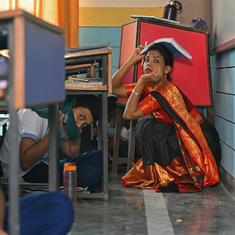Centre wants stricter Supreme Court guidelines on female genital cutting, an offence under IPC
The court was hearing a public interest litigation filed by advocate Sunita Tiwari seeking a ban on the practice.

The Centre on Friday asked the Supreme Court for directions on how to address the challenge of female genital cutting, but added that it was already an offence under the Indian Penal Code and the Protection of Children from Sexual Offences Act. The court was hearing a public interest litigation filed by advocate Sunita Tiwari seeking a ban on the practice that some girls from the Dawoodi Bohra community are subjected to.
The petition has sought guidelines for tackling the practice and asked for directions to be issued to the police to take action under the Indian Penal Code till stricter action comes into force, according to Bar and Bench.
Female genital cutting “is already an offence under several provisions of the Indian Penal Code and Protection of Children from Sexual Offences Act and these sections could be invoked to prosecute those who indulge” in the practice, The Times of India quoted the Centre’s counsel Attorney General KK Venugopal as saying. It also asked the court to issue directions regarding the matter.
The court will next hear the matter on July 9. It has added Kerala and Telangana as parties to the matter and served them notices seeking their reply. The court had earlier issued notices to Maharashtra, Gujarat, Rajasthan and Delhi.
In December 2017, the Ministry of Women and Child Development had told the top court that there is no official data or study that supports the existence of female genital cutting in India, The Indian Express reported. The ministry’s affidavit, however, followed its minister Maneka Gandhi’s statement in May that female genital cutting should be banned in India.
The Dawoodi Bohra community in India is known to practise female genital cutting, which typically involves a cut or nick to the clitoral hood. Investigations have showed it is practised even in literate communities in Kerala. The practice, called khatna or khafz within the Dawoodi Bohra community, is defined by the United Nations as Type-I female genital cutting, which describes this as including either the cutting of the clitoral hood or the partial or total removal of the clitoris, and is usually done to girls aged between six and 12 years.
The practice is not yet illegal in India, but female genital cutting in any form has been outlawed in several countries around the world, including the United States.
The World Health Organisation has not found any health benefits to cutting girls’ genitalia and has said that it may instead cause several negative short and long-term consequences. WHO has said that FGM leads to infections, cysts, infertility and higher childbirth complications, according to the Hindustan Times.









